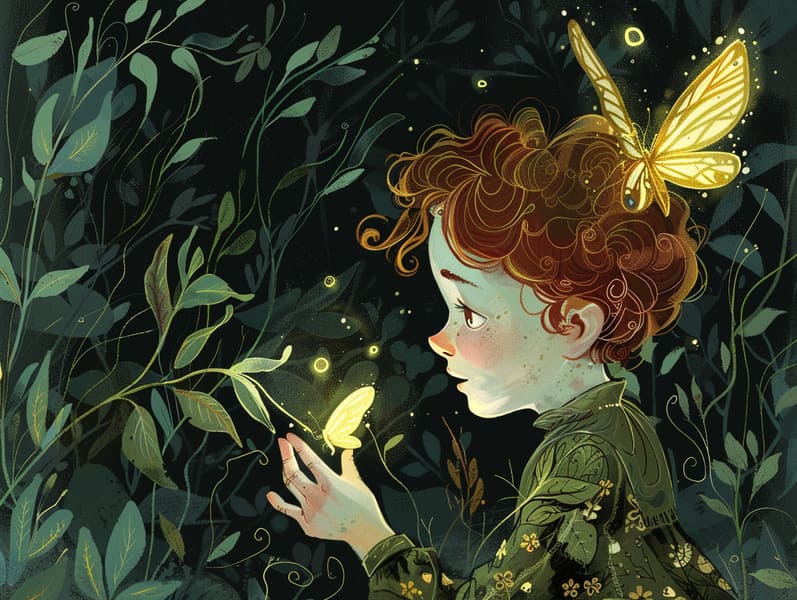The Dawn of Classic Fairy Tales and Its Unchanging Captivation.
The Dawn of Classic Fairy Tales and Its Unchanging Captivation.
Blog Article

Famous fairy tales have legendary status. These narratives have been narrated from one generation to the next well before they were ever written down. They came from a variety of traditions, including European traditions. They were initially transmitted among adults, often carrying themes and messages mirroring the societal norms and beliefs of the time.
The famous Grimm duo, Jacob and Wilhelm (the Grimm brothers), were among the first to compile and publish many of these beloved tales. Their collection, "Grimm's Fairy Tales," included stories like "The Story of Cinderella," "The Bread Crumb Trail," and "Snow-White and Rose-Red," which have since become essentials in the world of children's fairy tales. Similarly, the Danish author's imaginative tales, such as "The Little Mermaid," and "The Duckling that Could," have captured hearts worldwide, ensuring their place in the pantheon of classic fairy tales.
Despite their historical roots, these stories remain as applicable as ever, especially as bedtime stories for kids. These delightful tales are now available in multiple formats, including gorgeously illustrated books, delightful animations, and online storybooks.
Their unwavering allure can be attributed to several magical reasons:
Significant Morals: Classic fairy tales often provide important moral lessons. Fairy tales like "The Wolf and the Liar" teach the benefit of being truthful, while "The Story of the Tortoise and the Hare" emphasize the merits of steadfastness and meekness. These tales offer the young clear distinctions between correct and incorrect, guiding their moral compass in a subtle yet lasting way.
Sympathy and Perception: Ancient fairy tales frequently feature personalities facing difficulties and adversities, fostering listeners to comprehend with their struggles and support their triumphs. For instance, "Beauty's Beast" emphasizes the virtue of seeing beyond the surface to understand the inner self of a being, nurturing perception and knowledge.
Cultural Insights: Many fairy tales are imbued with the cultural contexts from which they developed. Engaging with these narratives can provide illuminating insights into different beliefs, building a sense of world appreciation and acknowledgment.
Inventiveness and Imagination: The imaginative elements in classic fairy tales—magic wands—foster children’s creative minds. These narratives transport readers to magical realms, enhancing imaginative dreams and a sense of delight that endures a lifetime.
Old fairy tales are not only mesmerizing but also didactic. They serve as bewitching tools in fostering various cognitive and affective skills in young readers. When ancient fairy tales are spoken, they improve communication skills by showing new terms and meanings and complicated sentence structures. This practice also cultivates listening skills and focus, as children concentrate deeply, expectant to see what happens next.
Furthermore, deliberating the themes and characters of traditional fairy tales can promote evaluative skills and logical thinking. Young readers learn to pinpoint patterns, foresee events, and grasp cause and effect. These talks also ease the young verbalize their thoughts and feelings, contributing to their emotional intelligence.
In today’s cyber age, the prevalence of digital fairy tales has made these narratives more available than ever. Internet sites and apps feature huge assortments of classic fairy tales that can be accessed or listened via anytime, anywhere. Fairy tales voiced are particularly well-liked, sharing an enjoyable way for kids to savor these fascinating tales. Read-aloud books and narrated videos take characters and settings to life, often paired with delightful sound effects and soundtracks that augment the narrative adventure.
The everlasting appeal of timeless fairy tales lies in their ability to alter to today's world while preserving their basic principles. Contemporary versions of these tales often show more representative protagonists and modern settings, making them pertinent to today’s audience. However, the fundamental themes of gallantry, understanding, and truth remain unchanged, continuing to strike a chord with children of all ages.
Timeless fairy tales also offer a sense of calm and recognition. They allow a coherent narrative with a obvious beginning, middle, and end, often drawing to a close with the ending of conflicts and the website triumph of morality over immorality. This foreseeability can be encouraging for young ones, affording a sense of unchangeability in an always shifting world.
Traditional fairy tales continue to charm and guide new generations, maintaining their captivation and impact in modern society. As kids' bedtime tales, they yield a perfect blend of fascination and comprehension, developing moral values, empathy, and creativity. The availability of online fairy tales and the prevalence of fairy tales spoken warrant that these ancient narratives remain accessible to new generations.
By perpetuating and communicating these tales, we continue to commemorate the rich tapestry of myths and cultural heritage. Whether you are discovering a richly illustrated book, experiencing a virtual collection, or hearing an voice book, the splendor of Grimm's fairy tales is always within reach. These fairy tales show us of the lasting presence of narratives and its ability to tie us across generations and cultures.
If you are experiencing a colorful picture book, accessing a internet collection, or listening on an audio story, the allure of famous fairy tales is always within reach.
These fairy tales convey of the consistent influence of narratives and its ability to bond us across time and space, making a tie that enchants and educates alike.